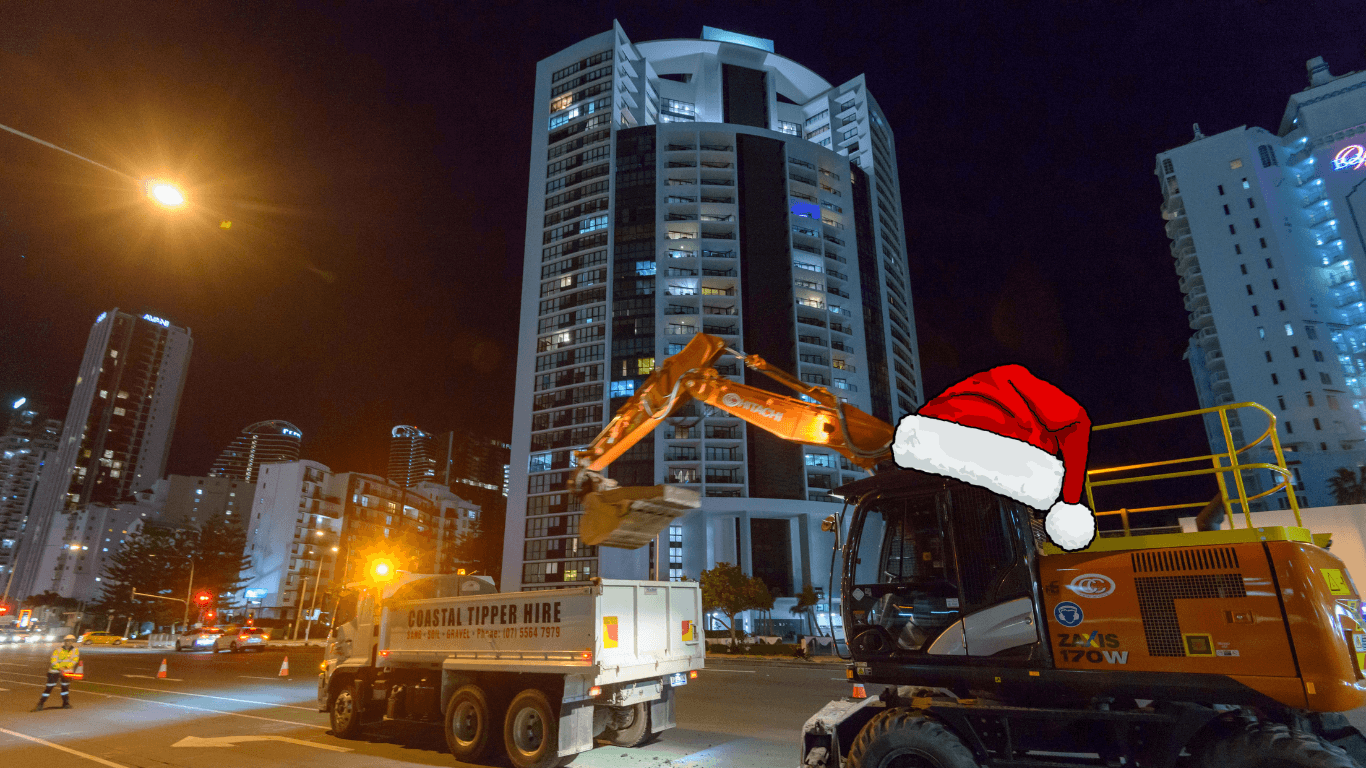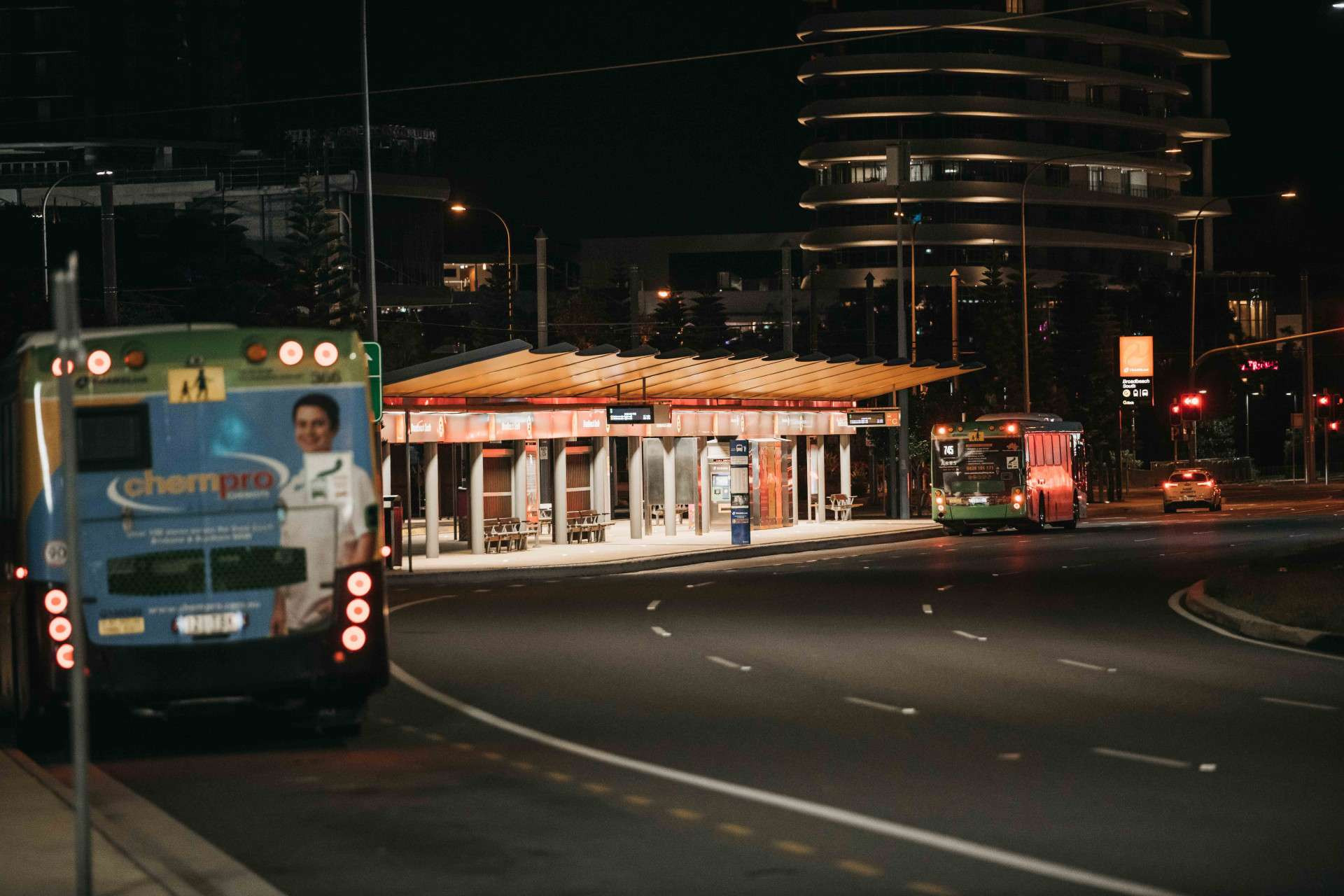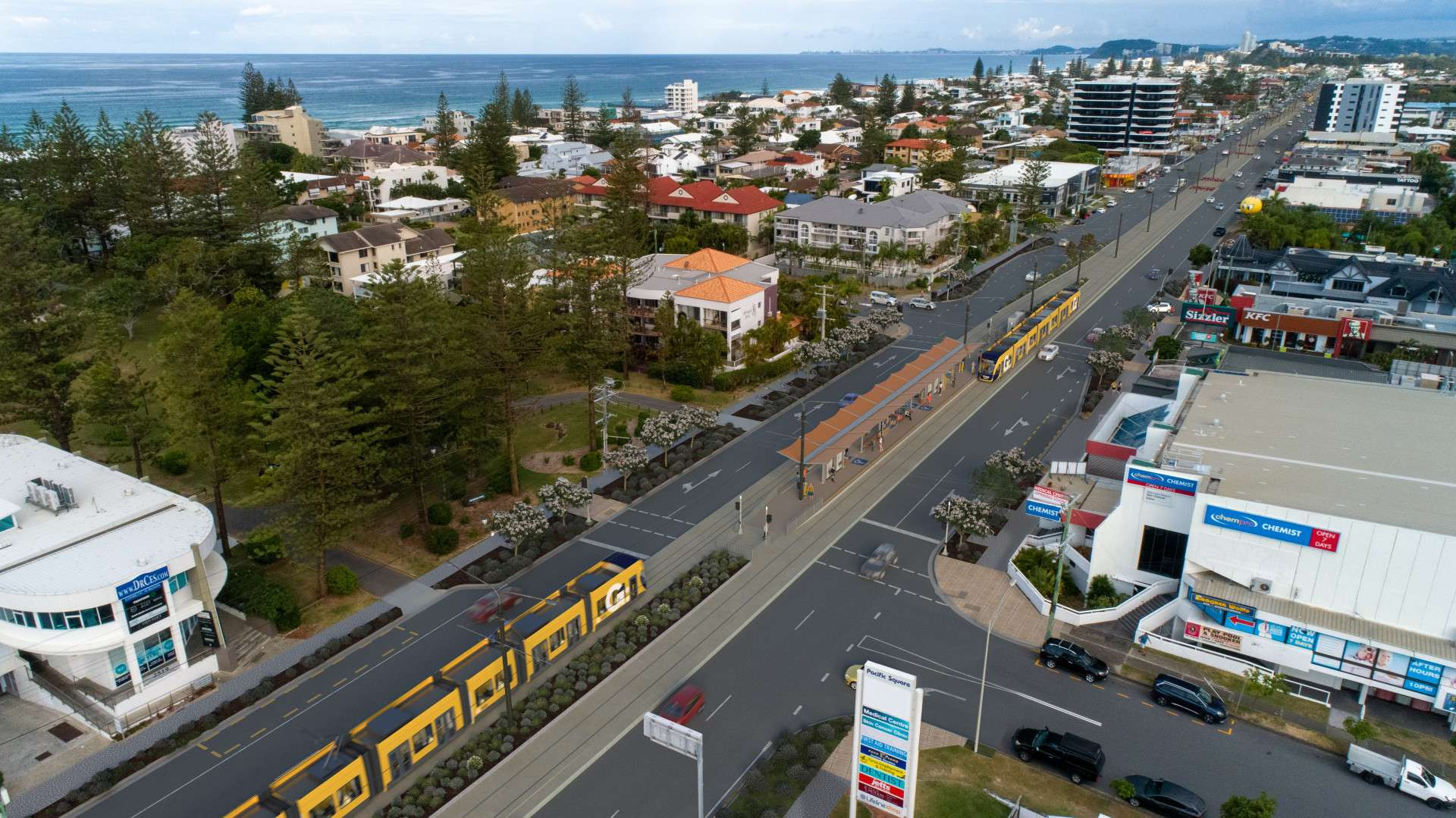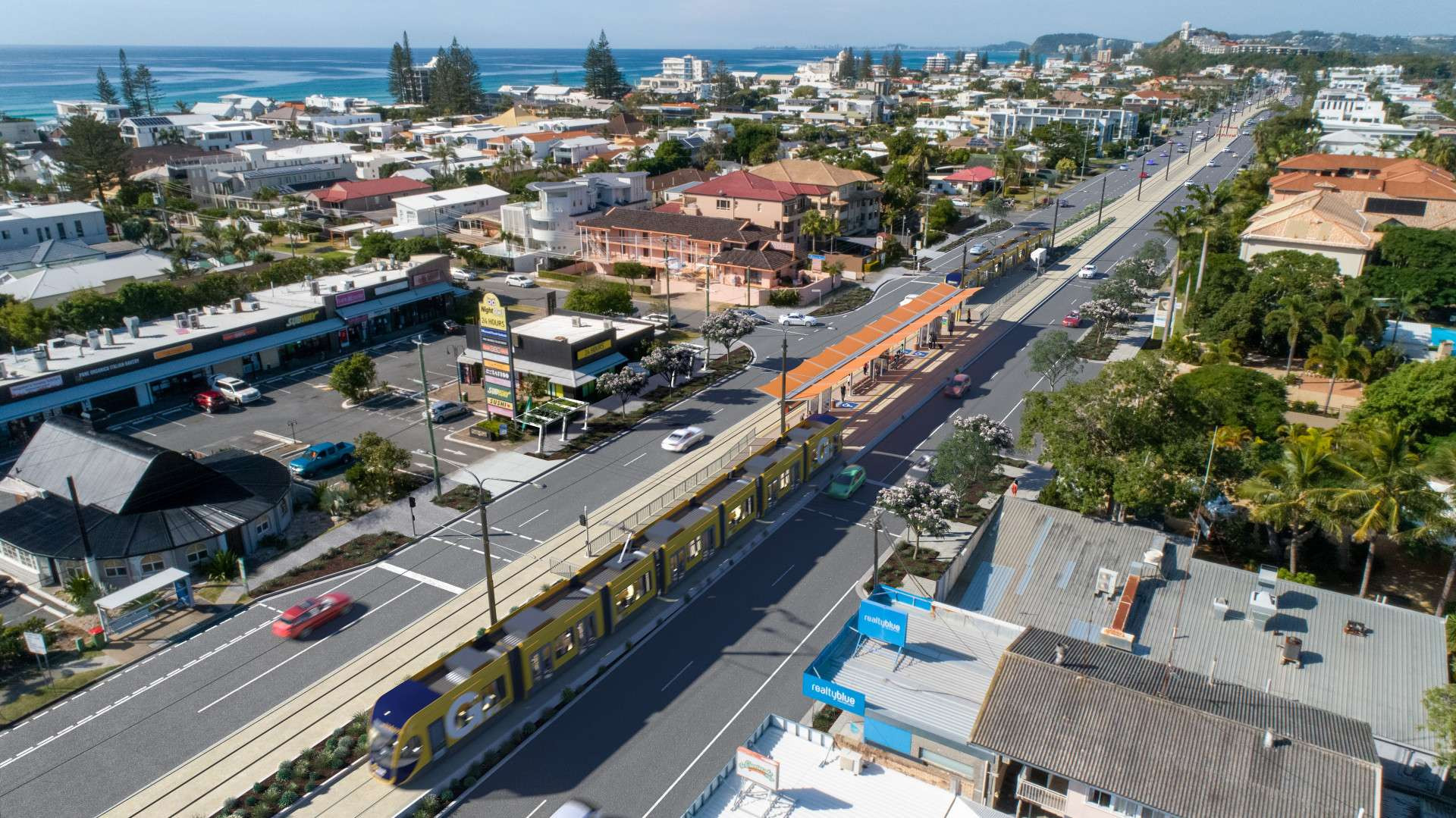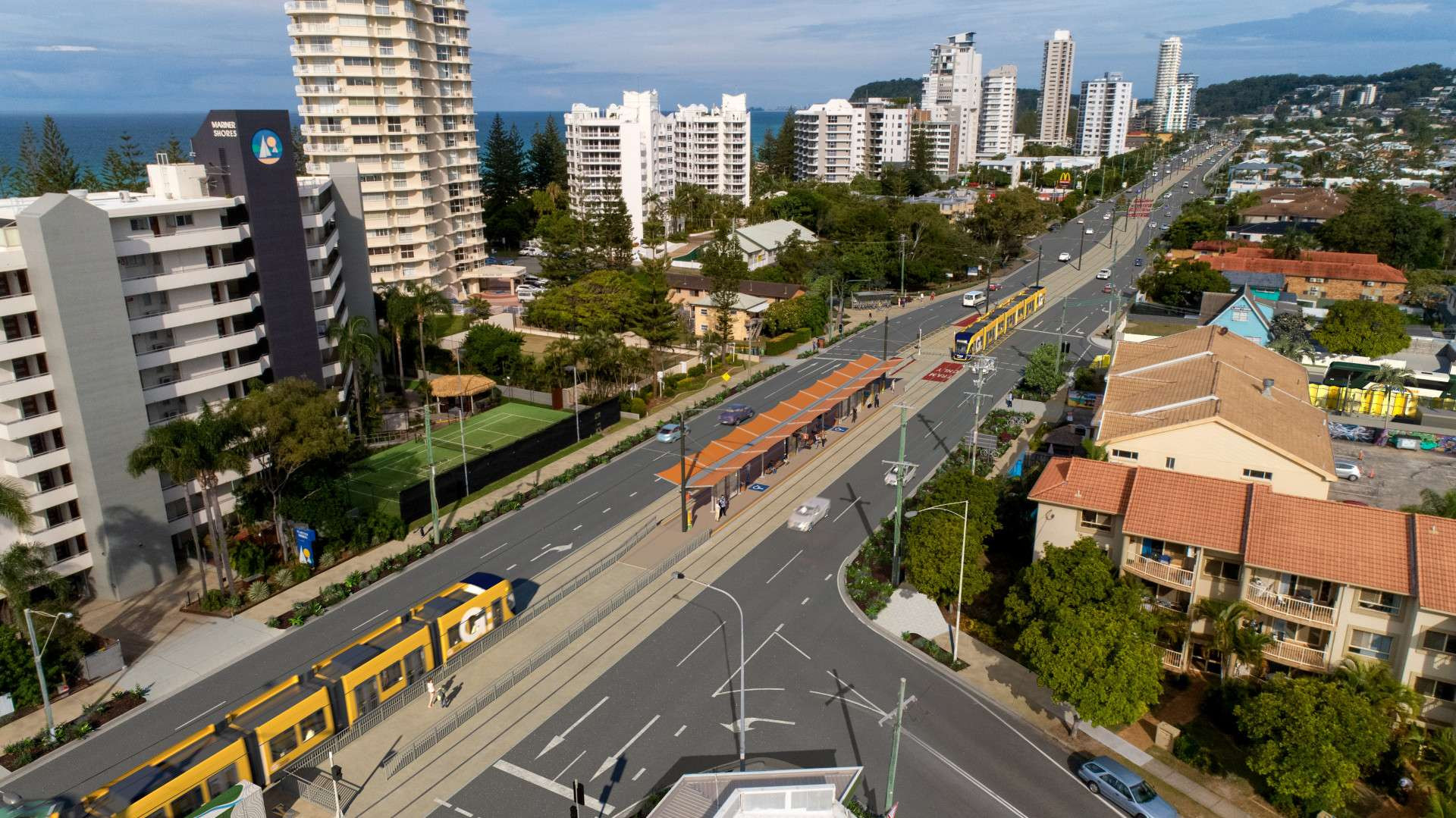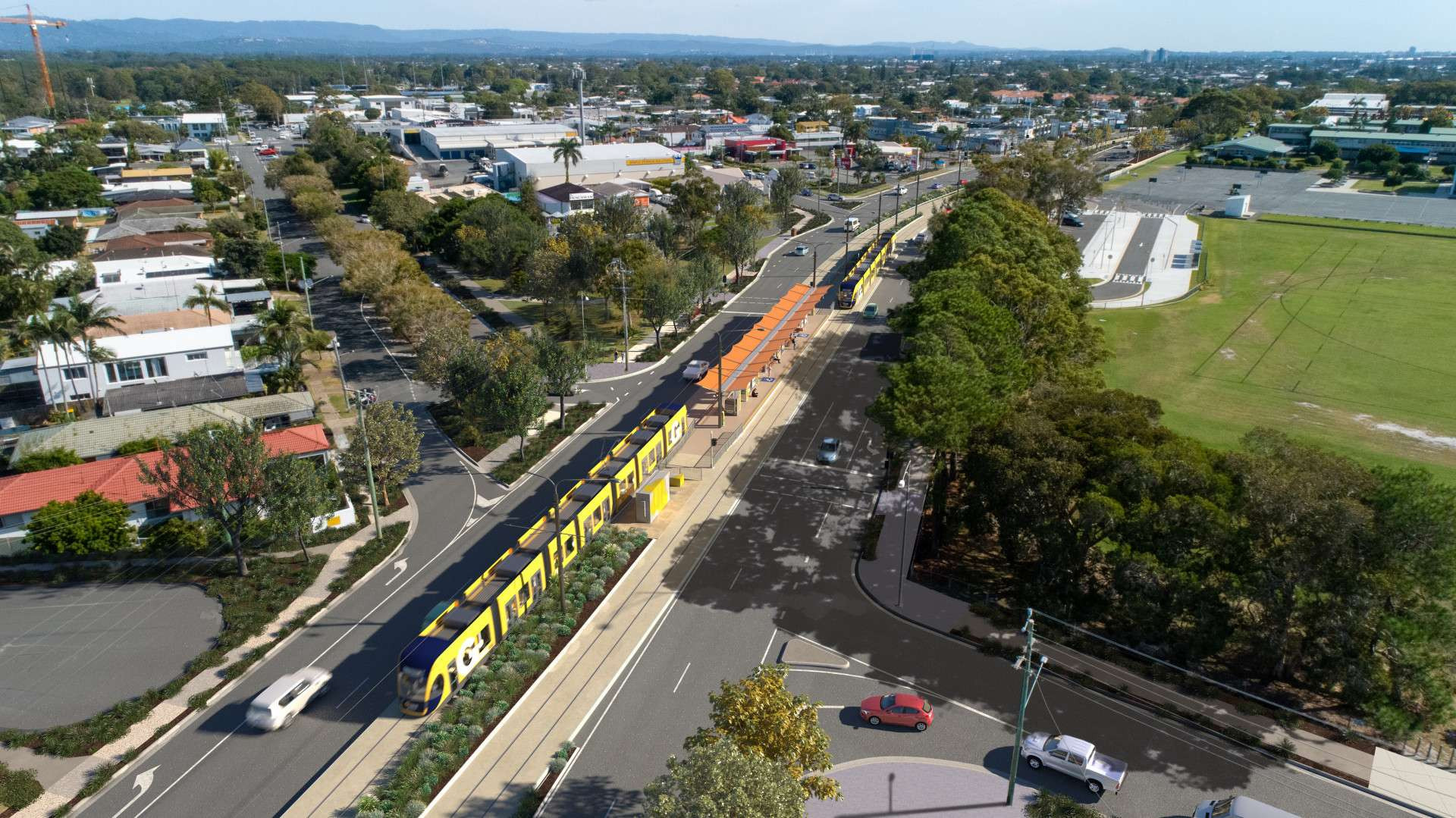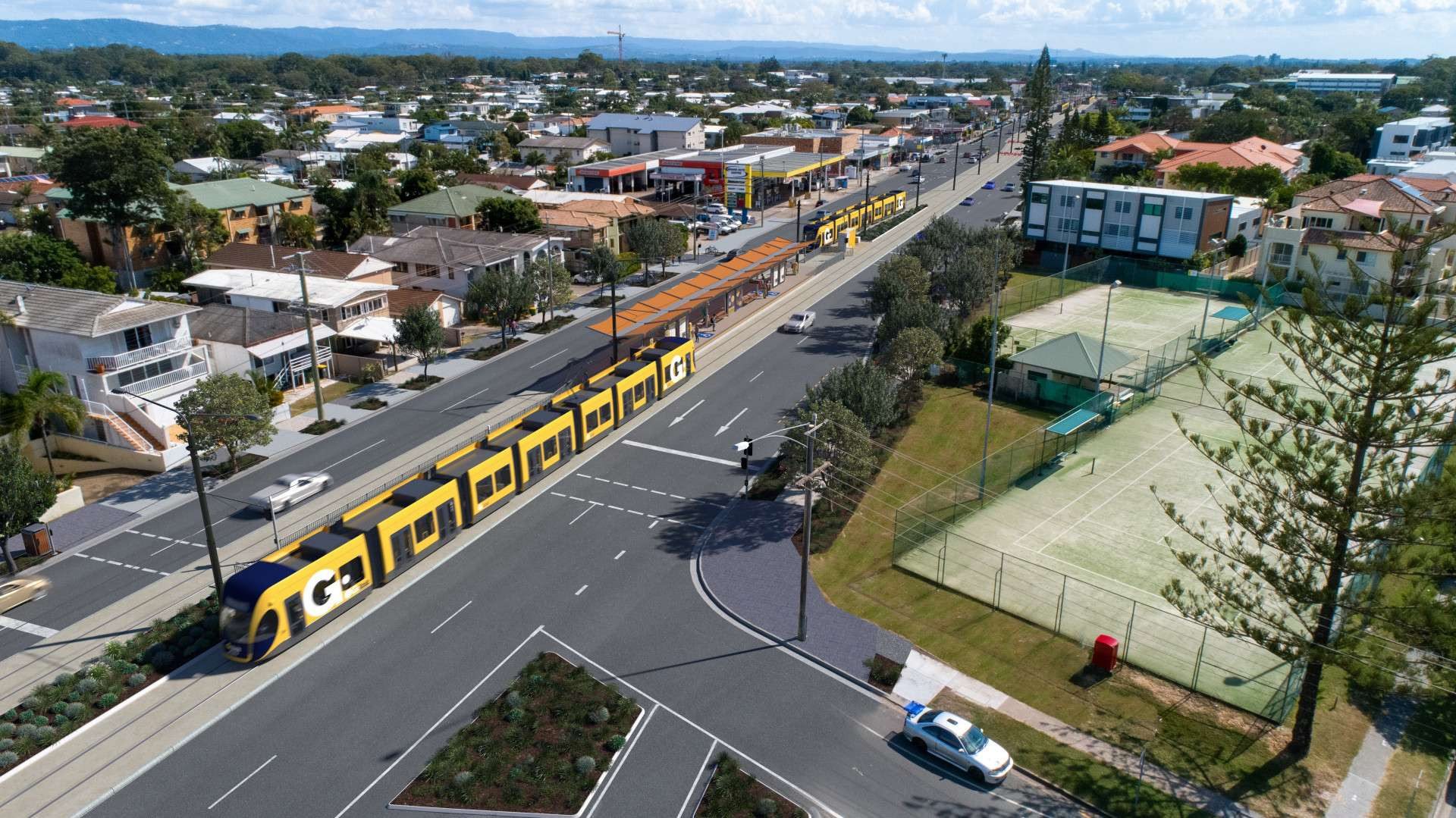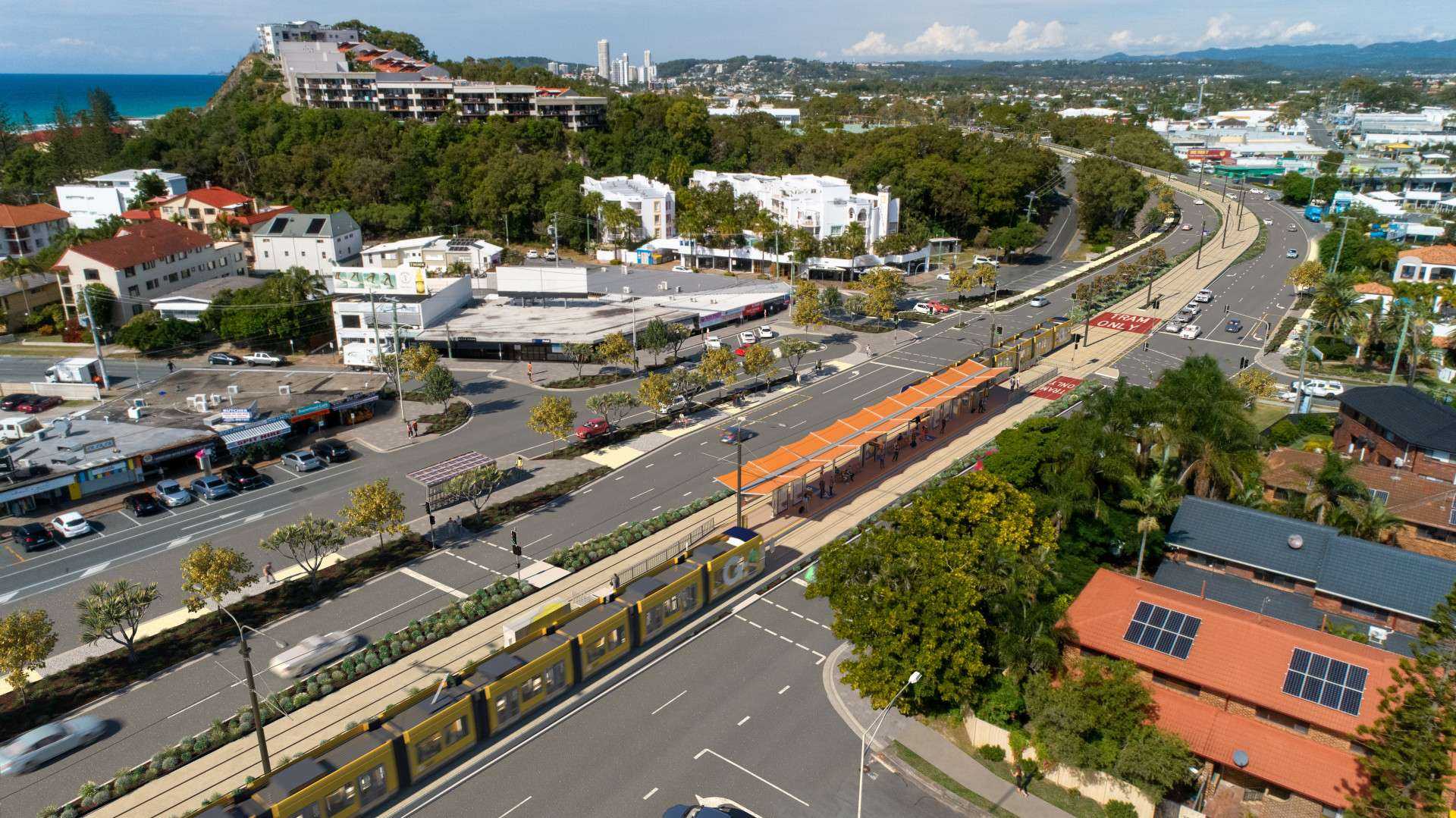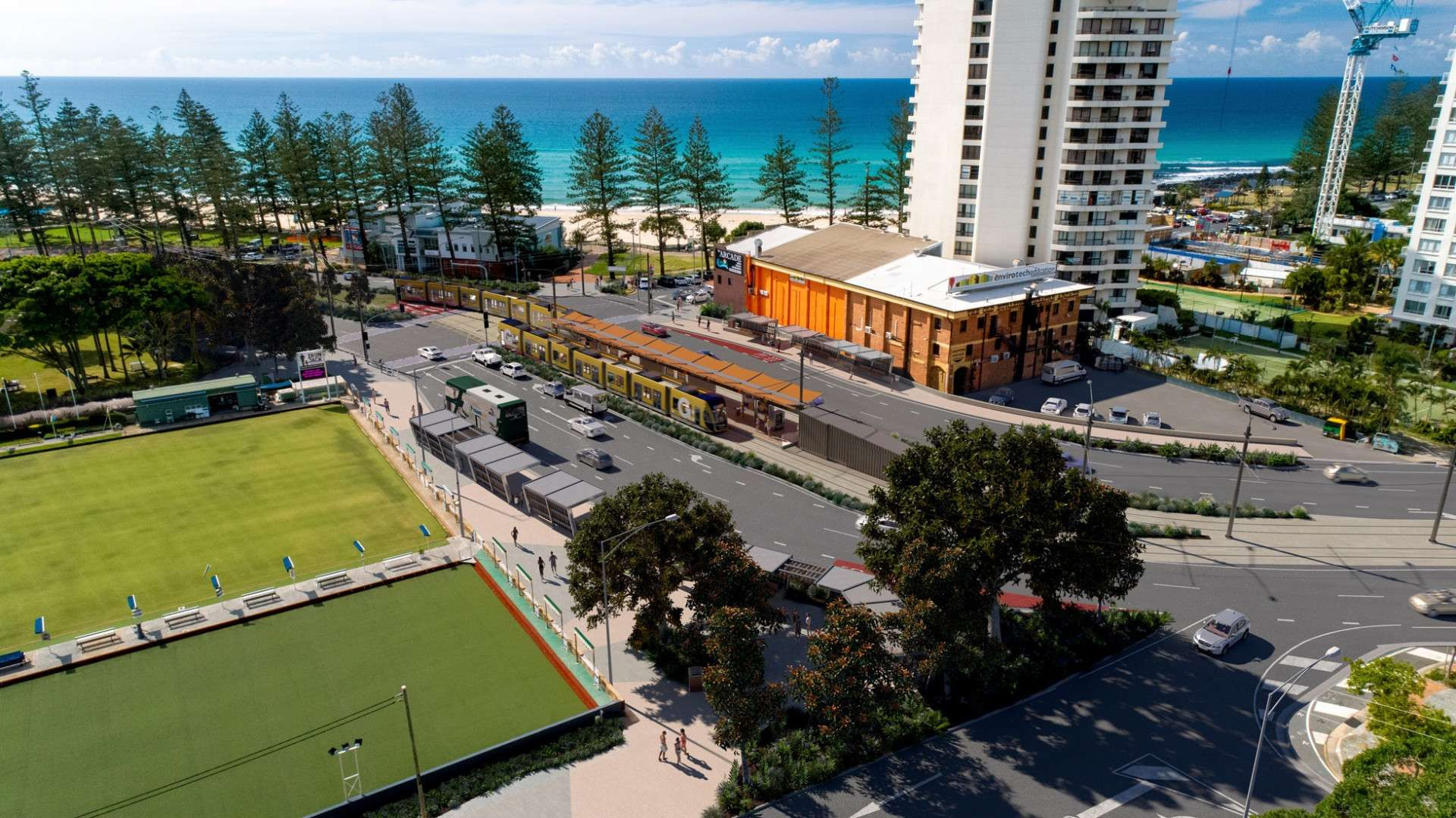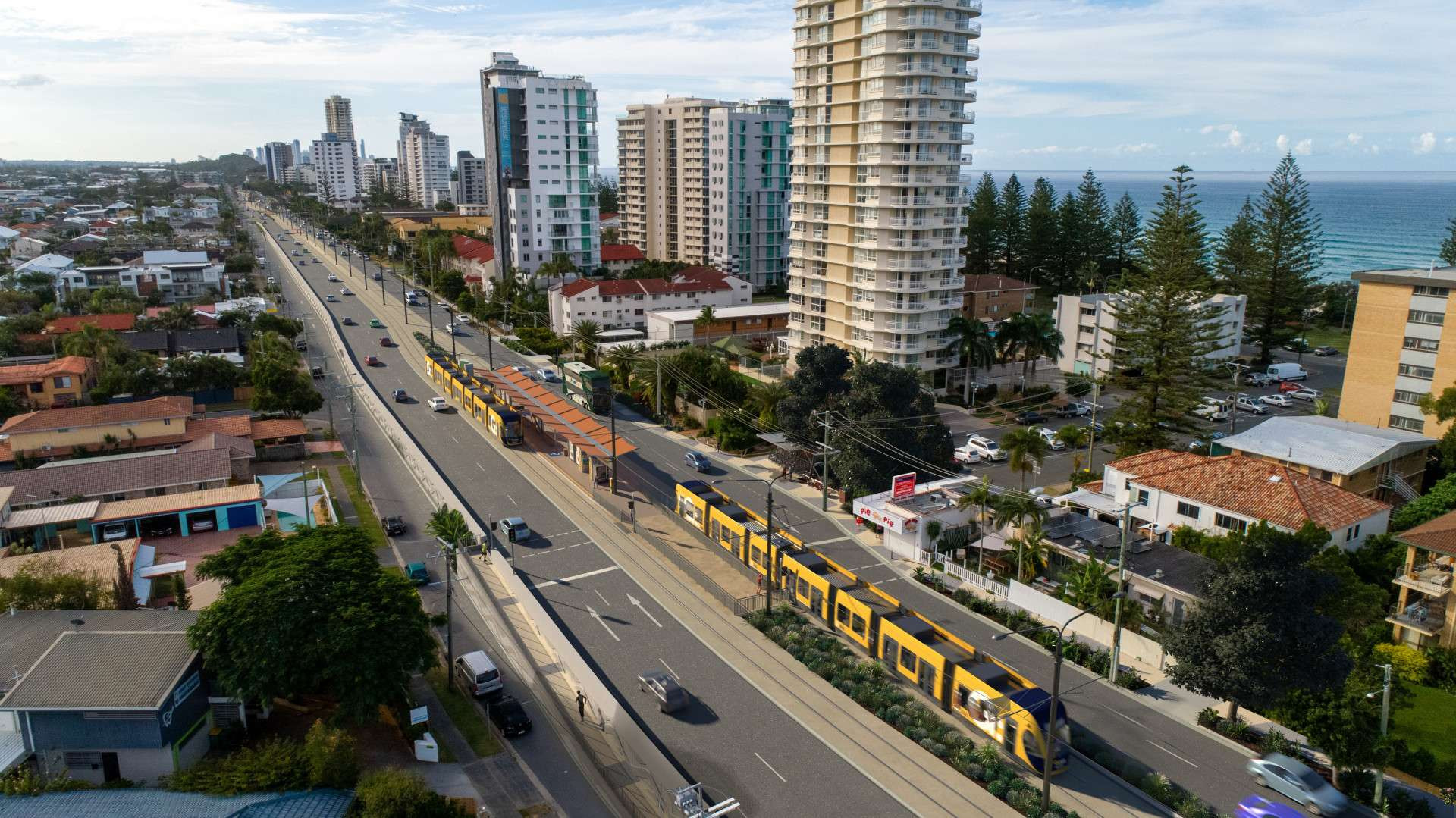Managing construction impacts
A project of the size and scale of Gold Coast Light Rail cannot be built without some impact on the surrounding area. We recognise there are a number of educational and medical facilities, places of worship, businesses and residents located close to the project alignment, and we are committed to minimising the impacts of construction as much as possible.
This page outlines the various mitigation measures that will be implemented throughout the duration of the project, with an aim to reduce the effects of construction works on the local community and the environment.
Construction noise and vibration
Residents, business operators, educational and medical facilities and places of worship located close to Gold Coast Light Rail Stage 3 (Stage 3) may be affected by construction noise and vibration.
Noise and vibration impacts will vary depending on the location of your property and the type and duration of construction activity.
The construction team is mindful of the potential impacts of these works and does everything reasonably practicable to avoid, minimise, and mitigate impacts on stakeholders and the wider community during construction.
Noise and vibration on Stage 3 is managed through an approved Noise and Vibration Management Plan (NVMP) prepared by GoldlinQ's chosen contractor, John Holland.
The NVMP outlines how construction impacts will be managed and is prepared in accordance with the Transport Noise Management Code of Practice: Volume 2 – Construction Noise and Vibration (The Code).
The Code outlines the process to achieve compliance with the general environmental duty for an activity that causes, or is likely to cause environmental harm, in accordance with section 551 of the Environmental Protection Act 1994.
Construction noise refers to all noise generated by construction activities in a project zone. An increase in noise is normal and to be expected while using machinery and equipment to build Stage 3.
Noise can be experienced differently due to varying environmental factors and individual responses to noise. This means an acceptable level of noise for one person can be unacceptable to another.
The types and levels of noise will vary as construction activities change. At times, our construction may create highly disruptive levels of noise, particularly when carrying out activities such as saw cutting, non-destructive digging, excavating and concreting.
There are five common types of noise generated during construction. They are:
Continuous noise such as a generator operating
Intermittent noise such as an excavator operating and vehicles manoeuvring
Tonal noise such as a blade turning on a circular saw
Impulsive noise which is typically a second in duration, such as piling or metal falling on metal
Dominant low frequency noise such as a vibration roller.
Some construction activities can cause a shaking sensation, known as vibration. It can have varied impacts on people as everyone has different levels of sensitivity and tolerance.
Buildings are constructed to withstand a level of vibration. People at nearby properties may feel vibration during construction activities, however, the vibration levels generated are not expected to cause any damage to properties.
Some of these activities include piling, compacting ground and road base materials, and demolition activities.
Managing construction noise and vibration impacts
Control of noise and vibration on Stage 3 relies on effective mitigation and management measures outlined in the NVMP. This plan commits to ensuring all reasonable and practical measures are taken to minimise noise and vibration impacts.
Where reasonable and practicable, measures will be implemented to prevent or minimise environmental harm (which includes environmental nuisance) from construction noise and vibration.
These include:
Completing noise and vibration assessments prior to construction to identify potential levels for specific construction activities and if they are likely to impact residents and businesses
Providing property owners near the light rail alignment the opportunity to have the existing condition of their property assessed, via a Dilapidation Report (pre-condition survey). This documents the condition of a property either prior to construction commencing or at a subsequent point in time as a reference, should a property owner believe there are adverse effects from construction
Carefully considering potential impacts during the construction planning process, selecting machinery and equipment most suited to the task, ensuring it is regularly maintained, and choosing the most appropriate construction methodology
Providing advance notification to nearby residents and businesses prior to noisy or vibration-generating works. We have committed to undertaking early and ongoing engagement with the local community to understand concerns about potential noise and to discuss mitigation measures
Providing periods of respite throughout construction
Training and educating our workforce to be mindful of nearby residents and to behave and communicate appropriately as guests in the community
Carrying out work during the day, unless night works are required (See the section below for more information about night works)
Installing noise mitigation measures, where possible, such as: Using high noise-generating equipment behind fencing with noise blankets
Placing machinery away from buildings
Using solar-powered lights and generators to reduce noise levels
Using non-tonal reversing alarms on machinery and equipment which produces a quieter sound compared to standard reversing alarms
Adopting construction practices which emit lower noise, such as using prefabricated materials to reduce noise-generating work on site.
Noise and vibration monitoring
Monitoring is conducted during work activities to ensure noise and vibration levels are consistent with the modelling levels predicted. Additional mitigation measures are investigated and implemented, where possible, if levels are higher.
Monitoring is conducted using specialised and calibrated equipment operated by qualified professionals. Mobile phone applications that have a ‘decibel reader’ are not an accurate measuring device.
Highly disruptive work activities during construction
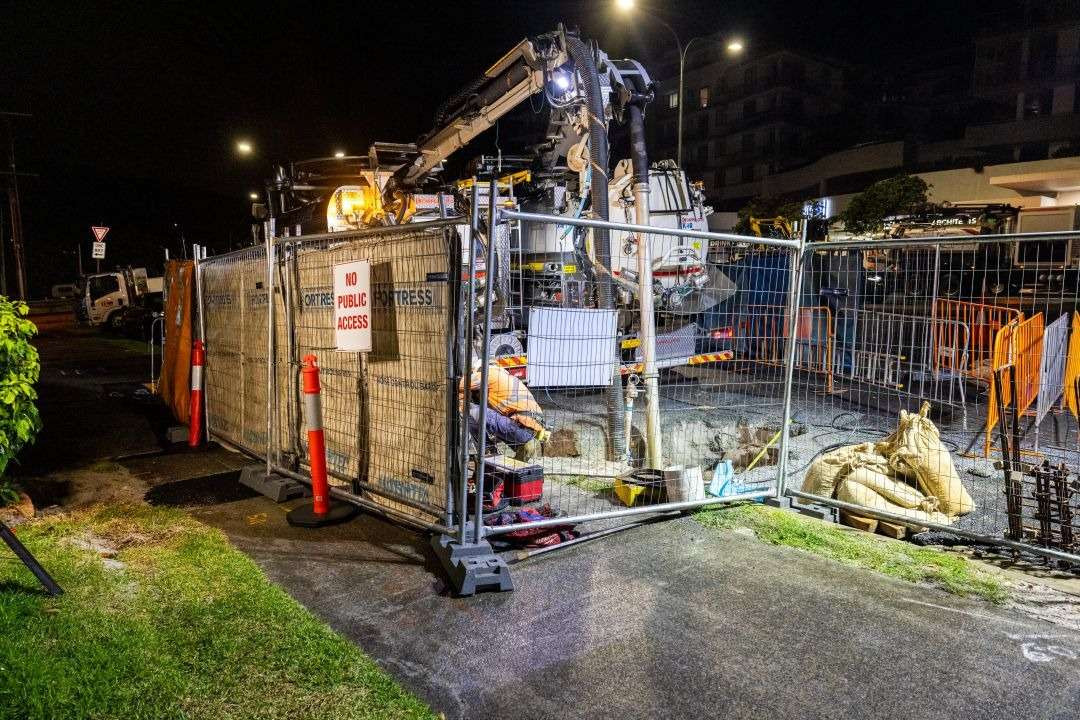
Noise type: Continuous noise with potential for tonal noise.
Description of activity and impact: NDD is a construction technique used to safely excavate near live services. The construction technique uses a combination of high-pressure water and an industrial strength vacuum to loosen the ground and suck up material. NDD has the potential to be highly disruptive up to approximately 50 metres from the noise source. The primary noise source results from the vacuum exhaust which is typically located towards the top of a truck.
Controls: Engaging contractors with modern vehicles which emit less noise than older vehicles.
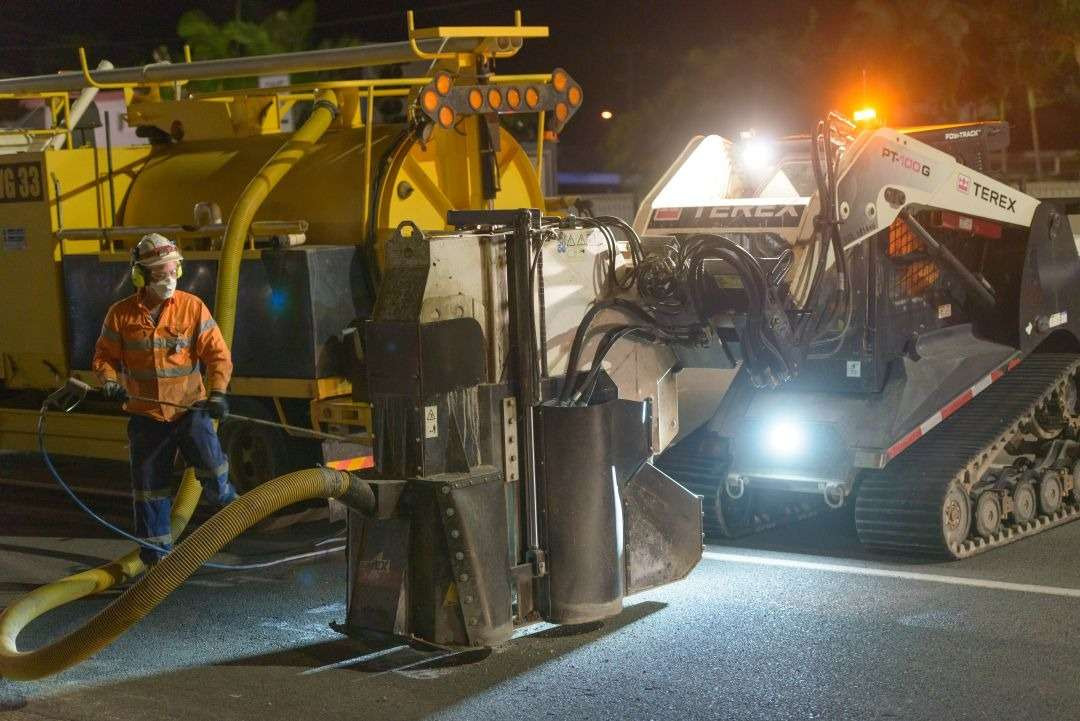
Noise type: Continuous noise.
Description of activity and impact: A saw cutter is a tool used to cut through hard materials such as concrete and asphalt.
The source of noise is generated by vibration and friction between the blade and the hard surface.
Controls: Saw cutting activities are undertaken earlier in the evening when working at night, and noise blankets are placed around the work area.
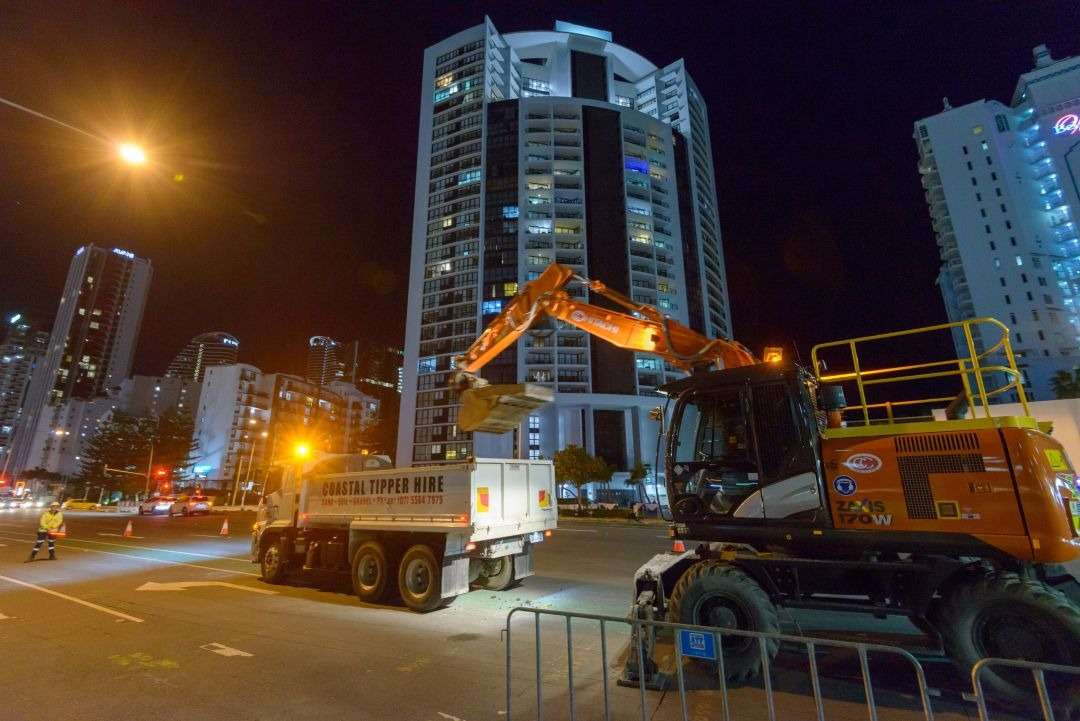
Noise type: Intermittent noise with potential for impulsive noise.
Description of activity and impact: Excavation is a common construction activity. Most Stage 3 works require excavation works.
Noise is generated from the excavation machine’s engine, and impulsive noise tends to occur while the excavator bucket removes material and loads it into trucks.
Controls: Excavators operate with rubber wheels rather than steel tracks. Suitable sized excavators are selected to minimise overall impacts and deliver works efficiently.
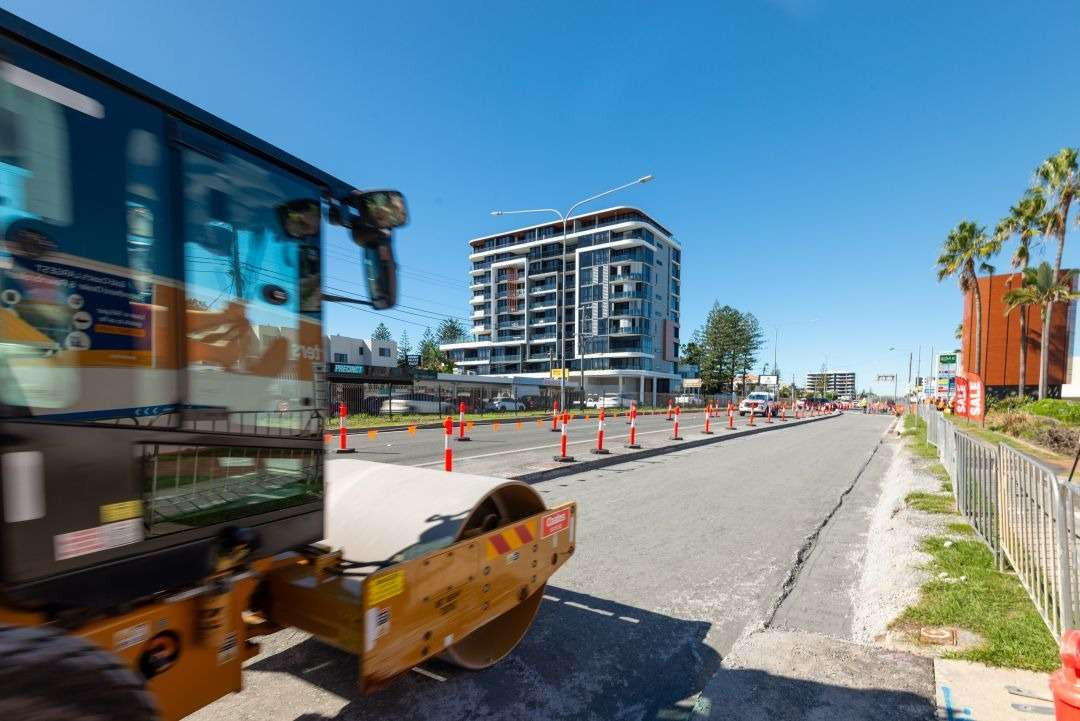
Noise Type: Intermittent noise with potential for dominant low frequency noise. Potential for vibration impacts.
Description of activity and impact: Road reinstatement works involve placing crushed material on the ground and compacting to meet a certain strength.
Handheld compactors are used to temporarily reinstate small work areas overnight prior to reopening the road to morning traffic.
Drum rollers are used to compact larger road surfaces, so they meet the required design strengths for a major road.
Compaction activities are expected to generate noticeable levels of vibration.
Controls: Vibration from compaction activities is limited by using an appropriately sized smooth drum roller.
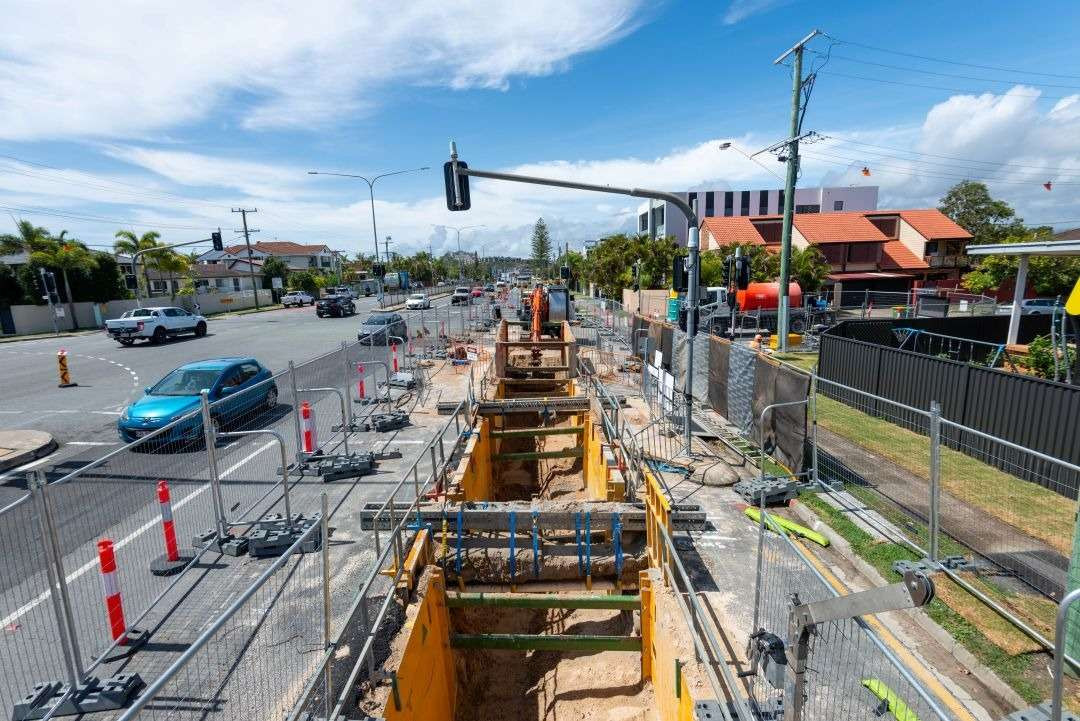
Noise type: Intermittent noise with potential for dominant low frequency noise. Potential for vibration impacts.
Description of activity and impact: Shoring boxes (trench boxes) are used on Stage 3 due to the sandy ground conditions. The likelihood of trenches collapsing without these is high.
Noise and vibration are generated when shoring boxes are lifted and placed into the ground. These impacts are typically periodic and not a continuous noise source.
Controls: Rubber mats are placed between the excavator bucket and the shoring box to limit noise.
Construction hours
Working at night
Stage 3 is being delivered in a highly constrained and built-up urban area and certain works need to be completed overnight.
When required, night works are carried out from Sunday night to Friday morning between 6.30pm and 6.30am. Examples of when overnight works will be required are:
To ensure the safety of construction workers
To carry out activities which can only be completed safely at night to limit major traffic disruptions
Working on critical infrastructure such as water and electricity, where works need to be undertaken while network usage is at its lowest, which and is a requirement of the utility provider
Work which needs to occur continuously such as concrete pouring or continuation of specialised work and work crews
Work that can only occur during certain weather conditions to ensure installation meets quality requirements
Deliveries of oversized plant and equipment
Time sensitive maintenance and repairs
Emergency work required due to unforeseen circumstances.
Standard construction hours
Standard construction hours (day works) are Monday to Friday 6.30am to 6.30pm.
Occasionally work will take place on Saturdays between 6.30am and 6.30pm.
No works will occur on public holidays unless impacted stakeholders are otherwise notified.
More information
Air quality and dust management
Some project activities such as excavation and earthworks may generate dust. Our team will manage dust where it is generated (at the source) to ensure that air quality is maintained, by implementing mitigation measures such as:
Using water carts regularly within our construction sites to dampen soil and dirt and limit the raising of dust.
Using street sweepers to reduce dust regeneration.
Installing rumble grids at entry and exit points to the work site to limit the transfer of dirt and mud onto public roads.
Stabilising/sealing exposed surfaces, including excavated areas and access roads within site.
Covering vehicle loads in accordance with the Transport Operations (Road Use Management) Act 1995.
Monitoring the weather conditions and adjusting the work program as required to respond to dry or windy conditions.
Regularly assessing works sites to identify any areas that require additional environment controls.
Light spillage
Lighting towers are required on site during night works to ensure crews can safely operate plant, carry out construction activities, and for oncoming motorists and pedestrians to clearly identify worksites, traffic management personnel and detour/wayfinding signage.
To reduce light spill, the project team will work directly with crews on site to position lighting towers away from residential properties, where possible.
Environment
Flora and Fauna
We are working with specialists to identify, manage, relocate and protect flora and fauna within our construction footprint.
In some areas of the project, vegetation clearing will be required, we will work with relevant authorities to minimise the need for clearing.
Ecological investigations have been undertaken to identify and record animal habitats along the construction corridor. These assessments include desktop research to review past and present reports and databases, and an examination of the construction corridor by foot.
Any animal handling or relocation will be done by a qualified and licenced fauna spotter/catcher.
Cultural Heritage
The project team recognises the importance of conserving Indigenous, historical, shared and natural heritage. Site investigations have been undertaken to ensure preservation of sensitive heritage areas and artifacts and will continue throughout the duration of the project.
Road safety and traffic changes
The Stage 3 project is committed to improving safety for all road users, pedestrians, bike riders and workers.
During construction, there will be traffic changes on the Gold Coast Highway and some surrounding side streets, including road closures, lane closures, parking closures, changes to speed limits, and bus stop relocation/closures.
Some traffic changes will be temporary to allow construction works to occur, while some changes will be permanent.
Road safety
Staying safe is our number one priority, and we’ll be managing road safety by:
Setting up safe construction zones suitable for all road users.
Using signage and VMS boards to communicate changed traffic conditions for all road users.
Using reduced height fencing around some construction sites to improve driver and pedestrian sight lines.
Promoting the safe behaviour of our staff and contractors.
Delivering a safe public transport and road network for the Gold Coast.
Some ways that you can help to ensure the safety of road users, pedestrians, bike riders and workers include:
Paying attention to road signs and traffic management personnel near construction sites.
Planning your trip ahead.
Keeping an eye out for road workers.
Staying calm and being patient.
Considering an alternate route or alternative mode of transport.
Expecting the unexpected: traffic conditions are likely to change regularly.
Maintaining a safe distance between your vehicle and other vehicles on the road.
Ensuring you are in the correct lane and merge as soon as possible to avoid last minute lane changes.
Reporting anything you think is unsafe – call our 24/7 community hotline on 1800 312 600.
Remember, speed limits and road signs throughout the construction site are enforceable.
Traffic management
To reduce traffic impacts, the project team will:
Maintain through traffic on either side of the Gold Coast Highway during construction.
Stage work to avoid traffic impacts during peak times (school holidays and during major events).
Monitor and manage travel delay times on the Gold Coast Highway.
Coordinate monthly traffic management meetings between project partners and road authorities to manage overall impacts to the Gold Coast road network.
Pedestrians and bike riders
During construction, there will be temporary road, lane and footpath closures.
When closures are in place, signage and wayfinding will be installed with traffic management present to guide pedestrians and bike riders safely around construction.
Parking
To ensure work can be undertaken safely and to minimise the impact to the local community and visitors, short and long-term closures of on-street parking are required.
As major construction progresses, on-street parking along the Gold Coast Highway between Broadbeach and Burleigh Heads will need to close.
Long-term closures of on-street parking will occur progressively from the second half of 2022 and will remain in place for the duration of construction.
Prior to any changes to parking, the project team will notify the surrounding businesses and community and engage with businesses to discuss loading zone requirements and offsets.
After construction and where space permits, some on-street parking will be reinstated permanently on the Gold Coast Highway. This is expected to occur progressively during testing and commissioning of the light rail vehicles.
Visit our parking map to find out more about where on-street parking will be reinstated after construction.
For more information, click here to read our parking factsheet.
Property condition surveys
Prior to major construction, property owners near the light rail alignment will have the opportunity to have the existing condition of their property assessed via a property condition survey.
Property condition surveys are routinely offered on major infrastructure projects to give property owners peace of mind before construction gets underway.
A property condition survey documents the condition of a property either prior to construction commencing or at a subsequent point in time. The report provides a reference should you believe your property has experienced any adverse effects from construction works.
Community engagement
The Gold Coast Light Rail Stage 3 Community and Stakeholder Engagement Team are working closely with the local community to deliver improved public transport outcomes for the area.
Community engagement is the most successful way to connect and interact with stakeholders and the community and includes:
Building strong relationships.
Working closely with affected property owners and stakeholders.
Providing updates well in advance of construction activities so you can plan ahead.
Responding to your enquiries and complaints in a timely manner.
Resolving problems.
Supporting local businesses by encouraging the wider project team to shop local and use local suppliers.
The community engagement team aims to increase public awareness by providing information about the project in several ways including:
Publishing regular information about the project and construction progress through newsletters, works notifications, advertisements, and website updates
Conducting regular briefings and door knocks to potentially impacted businesses, residents and community groups along the alignment.
Local community events and pop-ups.
Contact our dedicated community engagement team on 1800 312 600, or by submitting an enquiry.





